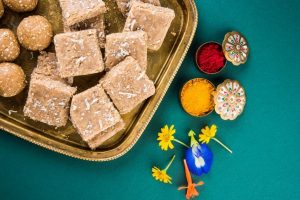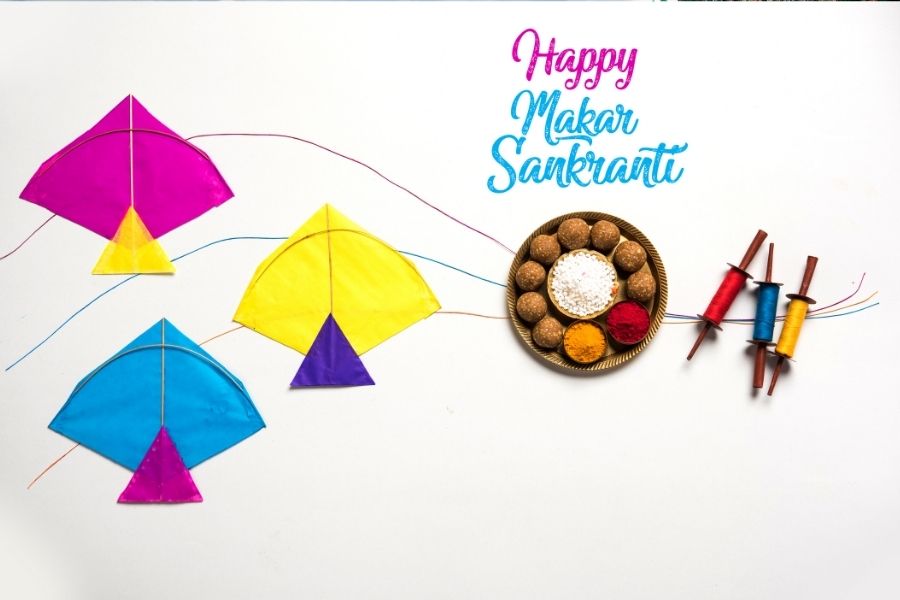Makar Sankranti
Come January, and India celebrates the harvest season. One of the first festivals of the year happens to be Makar Sankranti.
With Sankranti begins the harvest season and an auspicious time as per the Hindu calendar. Celebrated all over the country, it is called Uttarayan in Gujarat, Bhogali Bihu in Assam, Shishur Saenkraat in the Kashmir valley, Khichdi in UP and the west of Bihar, Pongal in Tamil Nadu and Makara Sankramana in Karnataka.
Chhattisgarh, Odisha, Bihar, Jharkhand, Goa, Haryana, Telangana, Andhra Pradesh, Madhya Pradesh, Maharashtra, Manipur, Sikkim, West Bengal, Uttarakhand, Rajasthan and some other states refer to the festival as Makar Sankranti.
Not only in India, but the festival is celebrated in the rest of South Asia as well and is known by different names. In India, like the names, the celebrations differ too.
Makar Sankranti Celebrations In Rajasthan.

Here is a sneak peek at how Makar Sankranti is celebrated in a few Indian states (in no particular order):
Gajak, ghevar, puwa, til laddoo, kheer, etc are sweets that are prepared and eaten to celebrate Makar Sankranti in Rajasthan. Married women are invited to their parent’s house, along with their husbands, on the first day of Sankranti. This leads to a big feast which is the Sankrant Bhoj and after it is over, fruits, sweets and foods are distributed to the needy. Kites are also flown.
Colourful halwas and til-gud laddoos mark the arrival of Makar Sankranti in Maharashtra. It is a three-day festival in which the first day is called Bhogi, the second day is Sankrant and the last day is Kinkrant. Legend says that there used to be a demon called Sankarasur who had set off to kill humans. To kill him, the goddess Sankranti had come to earth and upon the demon’s death, Sankrant began to be celebrated. Women celebrate Sankrant with an all-women get-together called Haldi-Kumkum. Married women invite each other to their houses where they are given Haldi-kumkum and symbolic utensils as gifts. Kite flying is a big thing in Maharashtra during these three days and chants of til-gul ghyaa, aani goad-goad bolaa can be heard.
Makar Sankranti Celebrations in Maharashtra.

Makar Sankranti is a four day festival in Tamil Nadu. Day 1 is called Bhogi Pandigai, the second day is Thai Pongal. Mattu Pongal is the third day and the fourth day is called Kaanum Pongal. On Bhogi Pandigai, old clothes are discarded by burning them. New clothes are worn marking the end of old and the beginning of new. On the second and the most important day of the festival, milk along with rice is boiled in new pots and in it are added raisins, cashews and brown sugar. The third day is kept aside to thank the cattle. They are not made to work that day, instead, they are allowed to be free and fed sugar cane and sweet rice. They are decorated with flowers and paints. On the fourth day, people visit relatives and bond with their family and friends, thanking them for their assistance in the harvest.
Makar Sankranti Celebrations in Tamil Nadu.
In West Bengal, this is also known as Poush Sankranti with the harvest festival being called Poush Parbon – poush being the month and Parbon indicating the event. Authentic sweets are prepared with freshly harvested rice, milk, coconut and syrup of date palm. The sweet prepared is called Pithe. A three-day celebration begins the day before Sankranti and is celebrated by all strata of the society.
Makar Sankranti also marks the beginning of what is referred to as the big bathing days. In Uttar Pradesh, the cities of Allahabad and Varanasi, and in Uttarakhand, Haridwar witness millions of people thronging to have the holy bath. Sweets made of til and gud are prepared and eaten by all. The day is also marked by kite flying from rooftops. Like in Maharashtra and Gujarat, here also the skylines are filled with colourful kites.
Makar Sankranti Celebrations in West Bengal.

In Karnataka, new clothes are worn and Sankranti offering of white sesame seeds along with jaggery, dry coconut and fried groundnut is exchanged with friends and family. Cattle are decorated with colourful costumes and taken on processions. In some parts, cattle are also made to walk on fire though the custom is on a decline on humanity grounds. Kites are flown in north Karnataka and it is the harvest season, sugarcane, bananas, Haldi-kumkum and other gifts are exchanged by women, like in Maharashtra.
Makar Sankranti Celebrations in Gujarat.
In Gujarat, Makar Sankranti is known as Uttarayan. One of the main festivals of the state lasts for two days – day one being the day of Sankranti and is called Uttarayan while day two is the next day and is called Vasi (stale) Uttarayan. Kite flying is major in this part of the country on these two days, especially. The activity usually starts in December itself, but on the days of Uttarayan, the sky can be seen peppered thickly with beautiful, colourful kites. Undhiyu and chikkis are favourite food items that are made in every household and are much loved. Also held at this time is the International Kite Festival.



